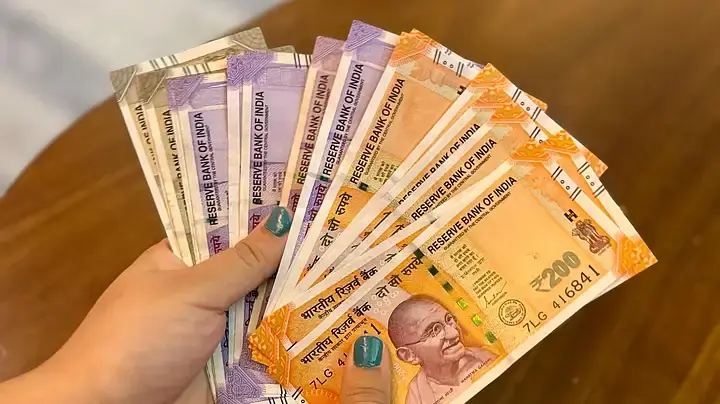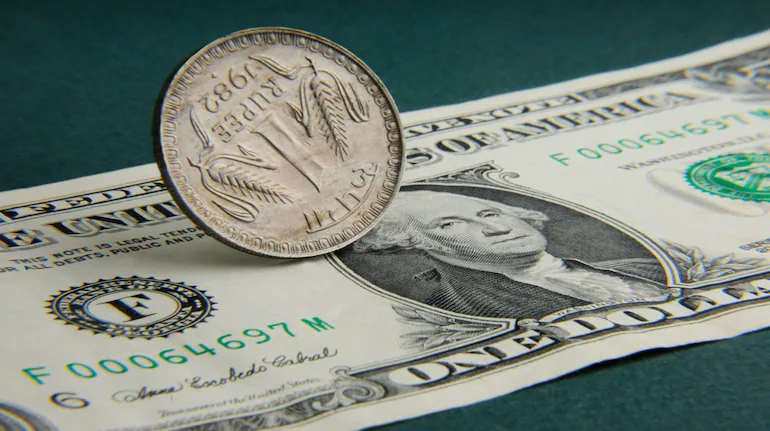All-Time Low of 88.49 Against US Dollar: The Indian rupee (INR) slipped to an all-time low of 88.4950 against the US dollar in early trade on September 23, 2025, amid weak performance of Asian currencies and a firm US dollar. The domestic currency opened at 88.4137, down 10 paise from the previous close of 88.3163. Investors and currency traders are closely watching these movements as persistent headwinds continue to exert pressure on the rupee.
Asian currencies were broadly weaker, adding to the pressure on the Indian currency. The South Korean Won declined 0.22%, the Thai Baht fell 0.16%, and the Indonesian Rupiah dropped 0.08%. Other major Asian currencies, including the Singapore Dollar, Japanese Yen, and Hong Kong Dollar, weakened by 0.05% each, according to Bloomberg data. This overall bearish sentiment in Asian markets contributed to the early weakness in the rupee.
Currency experts point out that structural issues and external factors are also weighing on the rupee. Enhanced US tariffs on Indian goods and the recent hike in H1B visa fees to $100,000 have sparked concerns among investors. The increase in visa fees raises worries about reduced remittances and potential equity outflows from India’s IT sector. With foreign inflows already weak this year, the rupee faces a double challenge. Despite the current dip, analysts expect the rupee to appreciate gradually if the dollar index weakens, with support levels predicted around 87.90–88.00, according to Amit Pabari, Managing Director at CR Forex Advisors.
Weak Asian Currencies Put Pressure on INR
Performance of Major Asian Currencies
- South Korean Won: -0.22%
- Thai Baht: -0.16%
- Indonesia Rupiah: -0.08%
- Singapore Dollar, Japanese Yen, Hong Kong Dollar: -0.05% each
A broad sell-off in Asian currencies, combined with a strong US dollar, created a challenging environment for the Indian rupee. Traders are keeping an eye on regional economic indicators, central bank policies, and global trade developments, all of which influence currency movements.
Read about: PSUs Flock to Debt Market as Quarter-End Funding Needs and Softer Yields Drive Bond Issuances
External Factors Affecting the Rupee
US Tariffs on Indian Goods
The US has increased tariffs on certain Indian exports, impacting trade flows and investor sentiment. Higher tariffs reduce export competitiveness, which can result in weaker foreign exchange inflows.
H1B Visa Fee Hike
The hike in H1B visa fees to $100,000 has sparked concerns about potential outflows from India’s IT sector. These higher fees may discourage companies from hiring skilled Indian workers abroad, indirectly affecting remittances and stock market investments linked to IT firms.

Market Expectations and Forecast
Despite early weakness, currency analysts predict some stabilization if the dollar index softens. Amit Pabari from CR Forex Advisors noted:
“With the dollar index on a weaker footing, the rupee is expected to appreciate from current levels, with support placed around 87.90–88.00.”
Investors are advised to monitor global trade policies, US economic updates, and domestic foreign exchange inflows to better understand future movements of the rupee.
Conclusion
The Indian rupee’s record low of 88.4950 against the US dollar reflects both global and domestic pressures. Weak Asian currencies, a firm US dollar, and structural issues like enhanced tariffs and visa fee hikes have combined to challenge the rupee’s stability.
Currency experts believe that while short-term pressures may persist, the rupee has the potential to recover if the dollar weakens and foreign inflows improve. Traders and businesses are recommended to stay vigilant and use hedging strategies to mitigate currency risk.
Looking ahead, India’s economic fundamentals, trade policies, and remittance flows will play a crucial role in determining the currency’s trajectory. Strategic monitoring of global economic cues can provide insights for businesses and investors to navigate potential volatility in the forex market.
The current situation highlights the interconnectedness of global markets, showing how external factors like tariffs, visa regulations, and regional currency trends can directly impact domestic currency strength.
Also read: 5 Things to Know About iPhone 17 Pro and 17 Pro Max: Specs, Features, Price and More
FAQs About Rupee’s All-Time Low
1. Why did the Indian rupee hit an all-time low against the US dollar?
The rupee’s decline is due to weak Asian currencies, a strong US dollar, higher US tariffs on Indian exports, and increased H1B visa fees. These factors reduce remittances and foreign inflows, putting pressure on the currency.
2. How do Asian currencies affect the Indian rupee?
The rupee often moves in correlation with other Asian currencies. When regional currencies weaken, foreign investors may withdraw funds or prefer stronger currencies like the US dollar, adding pressure on the INR.
3. What impact do H1B visa fee hikes have on the rupee?
Higher H1B visa fees could reduce the number of Indian professionals working in the US. This may lower remittances to India and cause potential outflows from IT-related equities, indirectly affecting the rupee.
4. What support levels are expected for the rupee?
Analysts expect the rupee to find support around 87.90–88.00 if the US dollar index weakens, providing a potential floor for stabilization in the near term.
5. Can the rupee recover from this low?
Yes, recovery is possible if foreign inflows improve, the US dollar weakens, and global economic conditions stabilize. Monitoring trade policies, remittances, and regional currency trends can provide insights for potential appreciation.

pv7uci